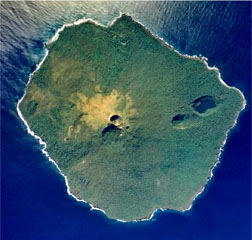Report on Late (Tonga) — 30 November-6 December 2022
Smithsonian Institution / US Geological Survey
Weekly Volcanic Activity Report, 30 November-6 December 2022
Managing Editor: Sally Sennert.
Please cite this report as:
Global Volcanism Program, 2022. Report on Late (Tonga) (Sennert, S, ed.). Weekly Volcanic Activity Report, 30 November-6 December 2022. Smithsonian Institution and US Geological Survey.
Late
Tonga
18.806°S, 174.65°W; summit elev. 540 m
All times are local (unless otherwise noted)
On 29 November Tonga Geological Services reported results from a recent visit to Late. The observers noted warmed ground surfaces, steam rising from fresh cracks, and vents at the summit. The features were too small to be identified in satellite images processed by VOLCAT (Volcanic Cloud Analysis Toolkit) software. They concluded that the features were the result of low-temperature hydrothermal activity driven by a shallow magma body at depth, and that the cracks were the result of past volcanic activity. There were no risks to local communities and mariners were advised to report any observable changes to the island. The Alert Levels all remained at Green (the lowest level on a four-color scale) for mariners, residents, and the aviation community.
Geological Summary. The 6-km-wide circular island of Late, along the Tofua volcanic arc about 55 km WSW of Vavau, contains a 400-m-wide, 150-m-deep summit crater with an ephemeral lake. The largely submerged basaltic andesite to andesitic volcano rises 1,500 m from the sea floor, with its conical summit reaching 540 m above sea level. Cinder cones are found north of the summit crater, west and north of a semicircular plateau 100-150 m below the summit, and on the NW coast. A graben-like structure on the NE flank contains two large pit craters, the lower of which is partially filled by a saltwater lake. Eruptions from the NE-flank craters produced explosive activity and possible lava flows in 1790 and 1854.

